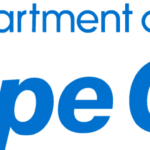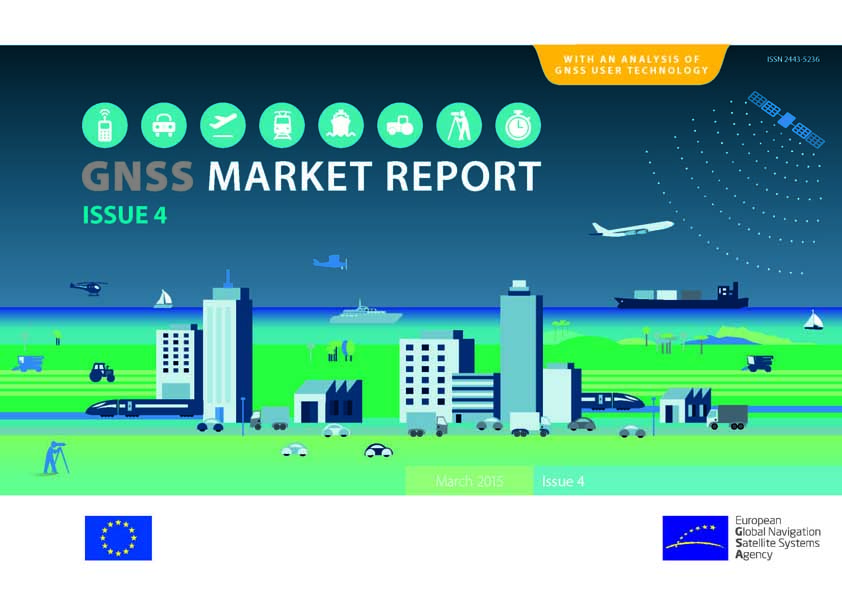 Main antenna on FOC Galileo satellite
Main antenna on FOC Galileo satelliteSIDEBAR: Elizabeth Rooney’s Compass Points
Going for her first big job interview after college, Elizabeth Rooney admits she didn’t know what GPS was.
“It was 1995,” she says, “and I was going in to see about this job. I had been looking at some literature from the company I was interviewing with, and there it was, ‘GPS.’ I wondered what the letters meant when I saw them.”
SIDEBAR: Elizabeth Rooney’s Compass Points
Going for her first big job interview after college, Elizabeth Rooney admits she didn’t know what GPS was.
“It was 1995,” she says, “and I was going in to see about this job. I had been looking at some literature from the company I was interviewing with, and there it was, ‘GPS.’ I wondered what the letters meant when I saw them.”
She had just completed a Ph.D. in theoretical physics, and after that fateful job interview — it was with Signal Computing Ltd. — she had a big choice to make.
“I had been made two offers,” she recalls. “I could go to work for Signal or I could do a post-doc at a university. I decided a job in the ‘real world’ would be more interesting.”
Despite her inauspicious introduction to the world of GNSS, only a few years later Rooney would be leading the technical assessment of the Galileo GIOVE-A payload, and managing the engineering teams involved in testing the satellite on the ground and in orbit.
Well, the journey didn’t end in the interview room of Signal Computing, as we shall see. By any standard, Rooney’s rise in the GNSS world has been impressive. And, in between, she’s also found success as a wife and mother.
But first things first. . . .
In the Beginning
Rooney’s academic background is in physics and math, her main areas of expertise being data analysis and algorithms.
“At school,” she says, “I was always better at maths and science than English and languages. Alas, I was told I spoke German with a Scottish accent.”
That wasn’t a problem for her parents. As a sensible and hard-working teenager, Rooney’s mother and father allowed her to study whatever she wanted, without trying to influence her decisions. She is grateful to this day for their unconditional and whole-hearted support.
After taking a Ph.D. in theoretical physics from Glasgow University, and following the enlightening “GPS” interview, she took the job as a technical analyst with Signal Computing.
“The company had a long term contract to monitor GNSS signals,” she explains. “That meant GPS and GLONASS.”
Back then, assessing GNSS availability and performance was not as routine as it is today. GLONASS was not particularly mainstream, and GNSS receivers were, by definition, newly developed. Consequently, Rooney and her colleagues spent a lot of time debugging anomalies and trying to isolate receiver issues from real events.
The results, of course, needed to be shared with professional peers.
“I presented many of our results at international conferences,” Rooney remembers, “which was both nerve-wracking and thrilling. By nature I am quite quiet and shy; so, standing up in a large meeting room at an ION [Institute of Navigation] conference was no mean feat.”
Along Came GIOVE
In 2002, Rooney went to work for Surrey Satellite Technology Ltd (SSTL), where she started by developing a concept for a space-based augmentation system satellite. It turned out to be a useful precursor for the GIOVE-A bid, which SSTL won in 2003.
GIOVE-A was the first Galileo In-Orbit Validation Element, eldest in a series of satellites built to test Galileo system technologies in orbit. Rooney says it was to become by far the most personal GNSS project she would be involved in.
“I joined the GIOVE-A project as payload manager in July 2003, leading a tightly-knit team of just five engineers,” she says. “The timescales were incredibly short, and there was real pressure to launch on time as the satellite’s main objective was to broadcast navigation signals before the Galileo frequency filings lodged with the ITU [International Telecommunication Union] expired.”
SSTL built the satellite, including a new platform and payload, and launched it within 2.5 years. It was the first time a Galileo payload had been put together.
“We worked incredibly hard,” says Rooney, “especially during the integration and test phase. Luckily the team got on well, which was just as well as we spent so much time together.”
GIOVE-A was launched from the Baikonur Cosmodrome in Kazakhstan in December 2005, onboard a Soyuz-FG/Fregat.
“Watching the launch was nerve-wracking,” Rooney recalls, “as the fate of all of our hard work was completely out of our hands, but the subsequent days of turning on the satellite’s various subsystems was exciting.”
One standout moment came at the in-orbit test (IOT) station, when the team watched and then applauded as the GIOVE-A navigation signals rose out of the spectrum analyzer’s noise floor for the very first time.
GIOVE-A went on to broadcast navigation signals for 6.5 years, greatly exceeding the required 2.5-year lifetime. Since the European Space Agency (ESA) discontinued the satellite’s navigation service in June 2012, SSTL has taken over the mission and has been using the GPS receiver onboard for other experiments. Rooney says the satellite, ever close to her heart, continues to be a valuable asset, even though its primary navigation mission is now over.
Galileo roll-out
The time had come for Galileo to make good on its promise of becoming a real operational system, and SSTL was not going to watch from the sidelines. In 2008, Rooney was appointed technical leader for the company’s Galileo full operational capability (FOC) bid.
And the rest, as they say, is history; SSTL won the contract, in partnership with the German firm OHB, to build the first 22 Galileo FOC satellites. Rooney’s current role is senior engineer within the payload team, responsible for verification and IOT activities, and providing general support and expertise.
“It’s exciting to be contributing to the development of a whole new GNSS system,” she says. “A challenge for me is to try to share my experience and knowledge with the younger members of the team.”
Rooney sees FOC as a continuation of the work she did on GIOVE-A. Of course, the payloads on FOC are more complex — with the addition of passive hydrogen masers, the C-band uplink system, and search-and-rescue transponder — and the requirements are more stringent for a fully operational payload with a 12-year mission compared to GIOVE-A’s 27-month demonstration mission.
“Once the development phase is complete, we will need to launch 22 satellites within a three-year period,” she says, “and we have had to work hard with our colleagues at OHB to ensure that the interfaces between our teams work well and efficiently.
“We are approaching a key period, with the first two FOC satellites undergoing environmental tests leading up to the qualification acceptance review. Once these challenges have been met, we will be in a position to start preparations for the first launch.”
Meanwhile, Back on the Home Front
Rolling the film back a little, something else besides GIOVE was happening in 2005 that would change her life forever — her boyfriend, Saad Abdul-Rassak, soon to be husband, proposed marriage to her. Rooney says the couple had known each other for some years and, somehow, he decided the time was right.
So, on top of the GIOVE-A launch, Rooney was busy meeting an additional and equally ambitious deadline — in just six short weeks the couple were married.
And another irresistible challenge has also come up: “I now have a young family,” Rooney announces. “I have had two children since the start of the FOC project. Getting the balance right between working on a demanding satellite mission alongside the no less challenging job of being a mum is an ongoing process.
“Looking back at my involvement in the GIOVE-A mission, I realize it was always going to be difficult for me to replicate that level of commitment, now that I have a family to look after.”
Rooney was born in the town of Irvine in Ayrshire, in Southwest Scotland. The house she grew up in was just a couple of miles from the coast, with nice views out to the Firth of Clyde and the island of Arran. She is an only child, although she was close to two cousins when she was growing up.
An idyllic start, but like most remarkable lives, Rooney’s has included some rough patches.
“Although I met my husband at Glasgow University,” she explains, “he is actually from Iraq, and his family still lives in Basrah. So, there have been some tense and worrying times over the past 20 years, with the wars and instabilities in the region.”
And Rooney lost her mother, her unconditional supporter, who died suddenly at the age of 56 in 2003.
Moving Ahead
“Having children has completely changed my view on life,” she recognizes. “Previously, I was a complete workaholic, working long hours every day. Now, I sometimes describe myself as a frustrated workaholic.”
As her husband works in London and she works in Guildford near where they live, Rooney is the one who takes the kids to nursery school and picks them up again in the afternoon. This puts a strict limit on the number of hours she can spend at the office.
“If I have to leave before completing my work for the day, then I work at home in the evening, once the children are in bed,” she says.
Traveling for work involves lots of planning as well, arranging for childcare and such. Even an early start or a late finish to incorporate long meetings or workshops needs some careful planning to try to minimize any adverse effects on the children’s routine.
“It is probably fair to say that building satellites is not a typical job for most working mums,” she grants, “and my approach to my job has had to change in a major way.”
Obviously, Rooney feels an enormous sense of duty towards her children, and she feels great joy in watching them grow and develop.
“My husband Saad and I both did scientific degrees at university and we hope our son Joseph and daughter Hana will be inspired to take an interest in technical and academic subjects. We try to answer their ‘hows and whys’ in interesting ways, to foster their inquisitive natures.
“Explaining science and engineering to a pre-schooler is a challenge though. We tried to explain the tides to my son, who is three, during a trip to the beach, and he does his best to explain it back, complete with hand-waving and references to the moon.”
But then, Elizabeth Rooney has never been one to avoid a challenge.
Looking up at the night sky, watching the moon and the stars, her little boy and girl may one day learn to recognize a passing satellite, and in it see their mummy’s handiwork, and remember her loving eyes.





